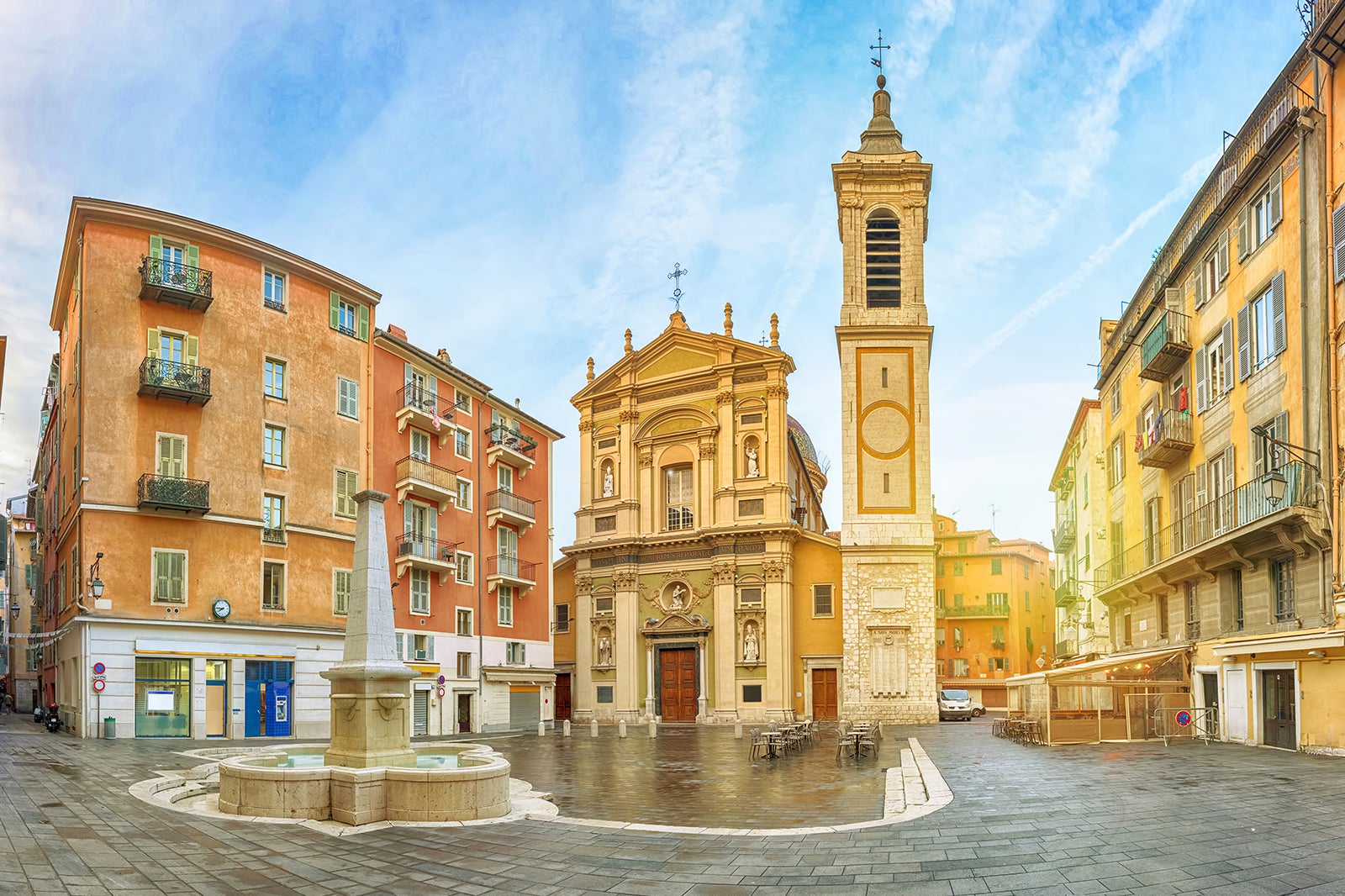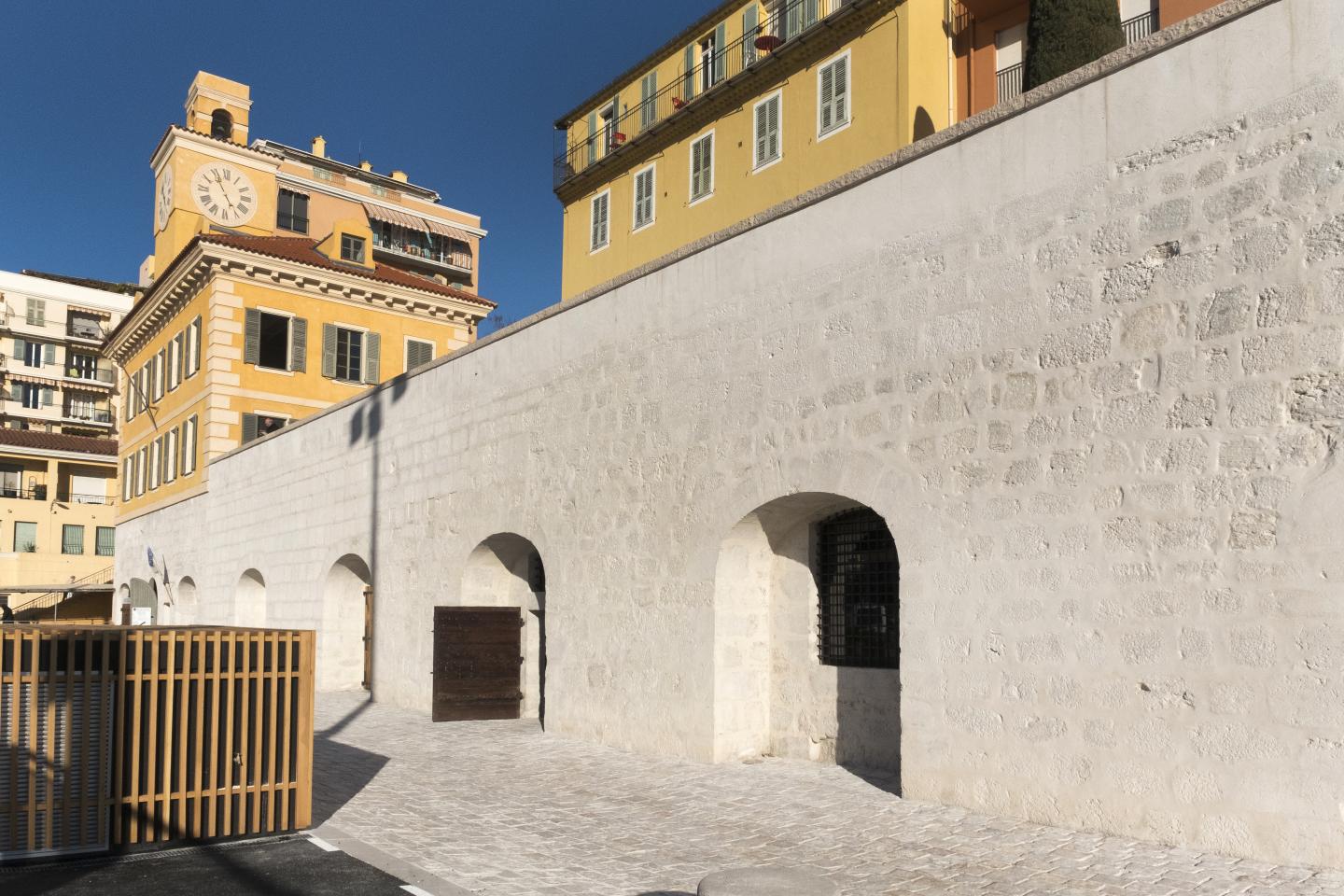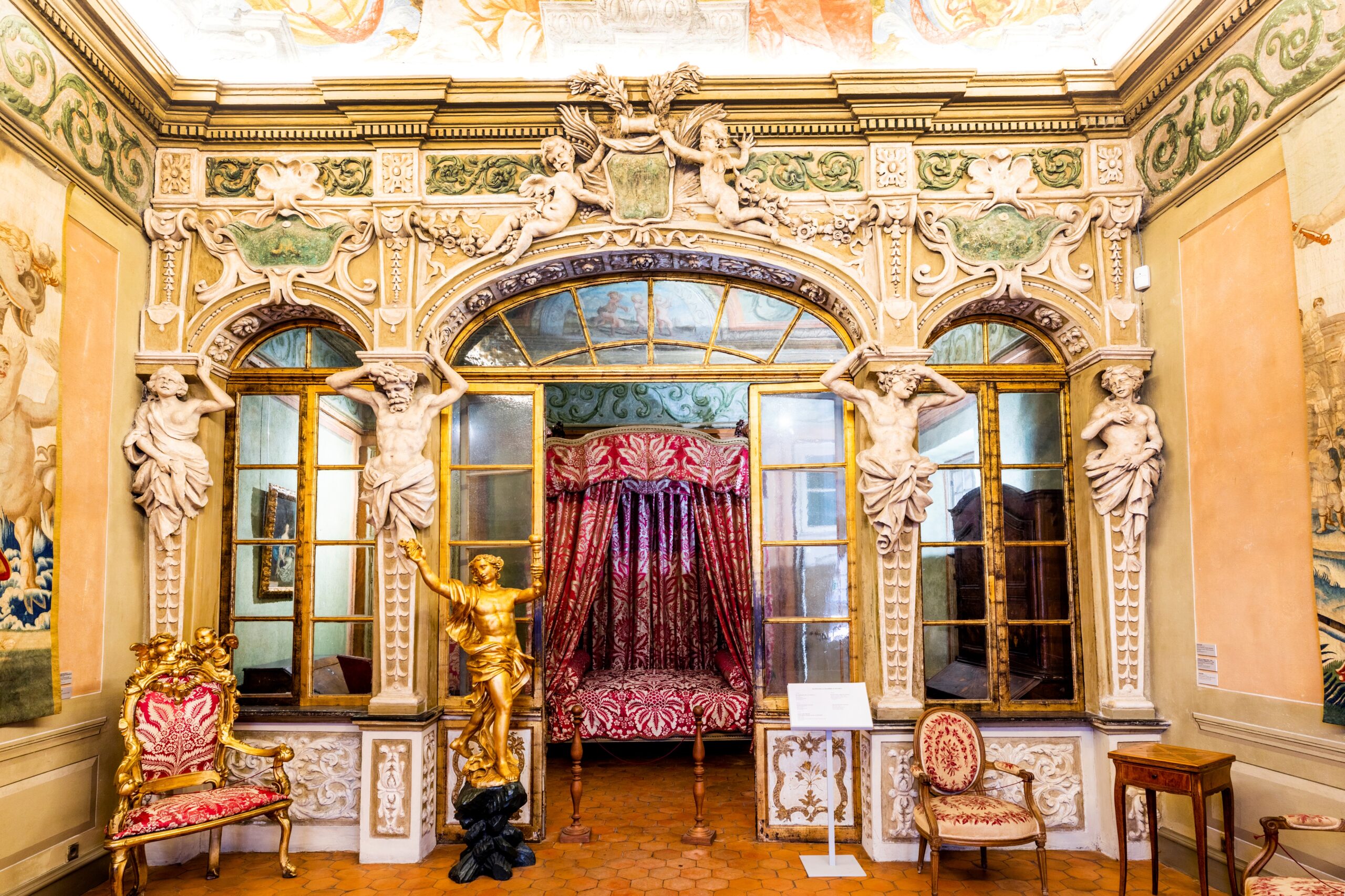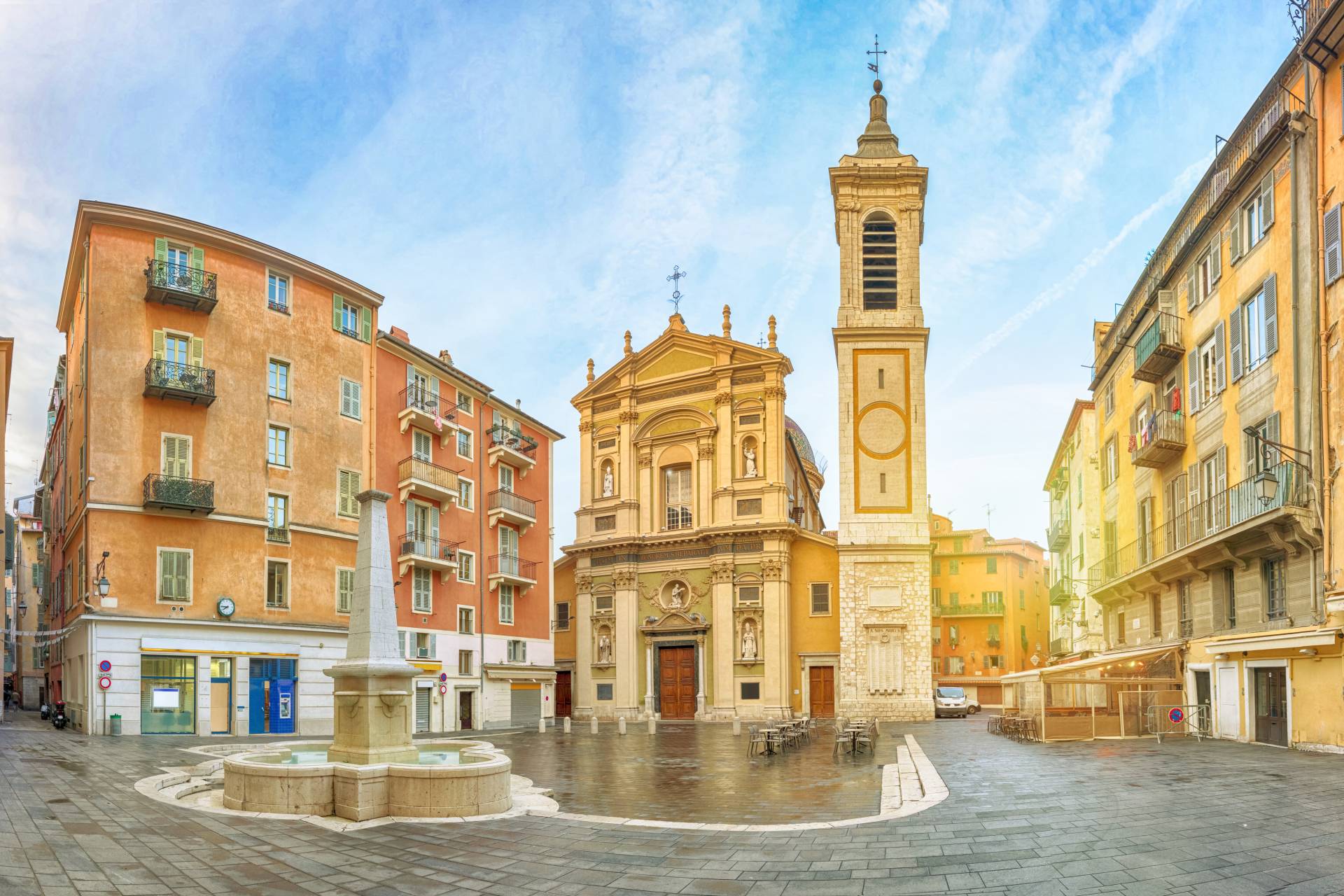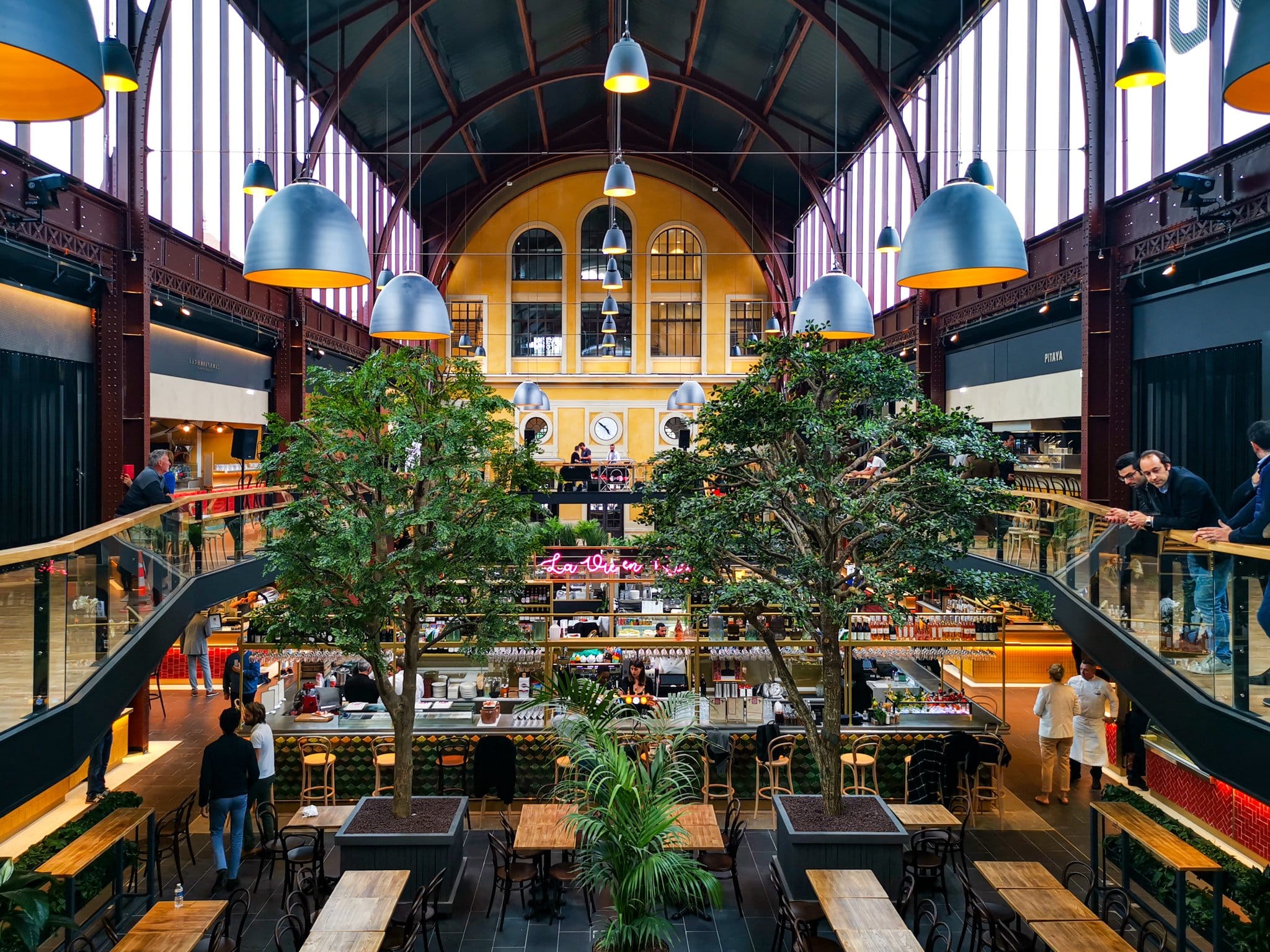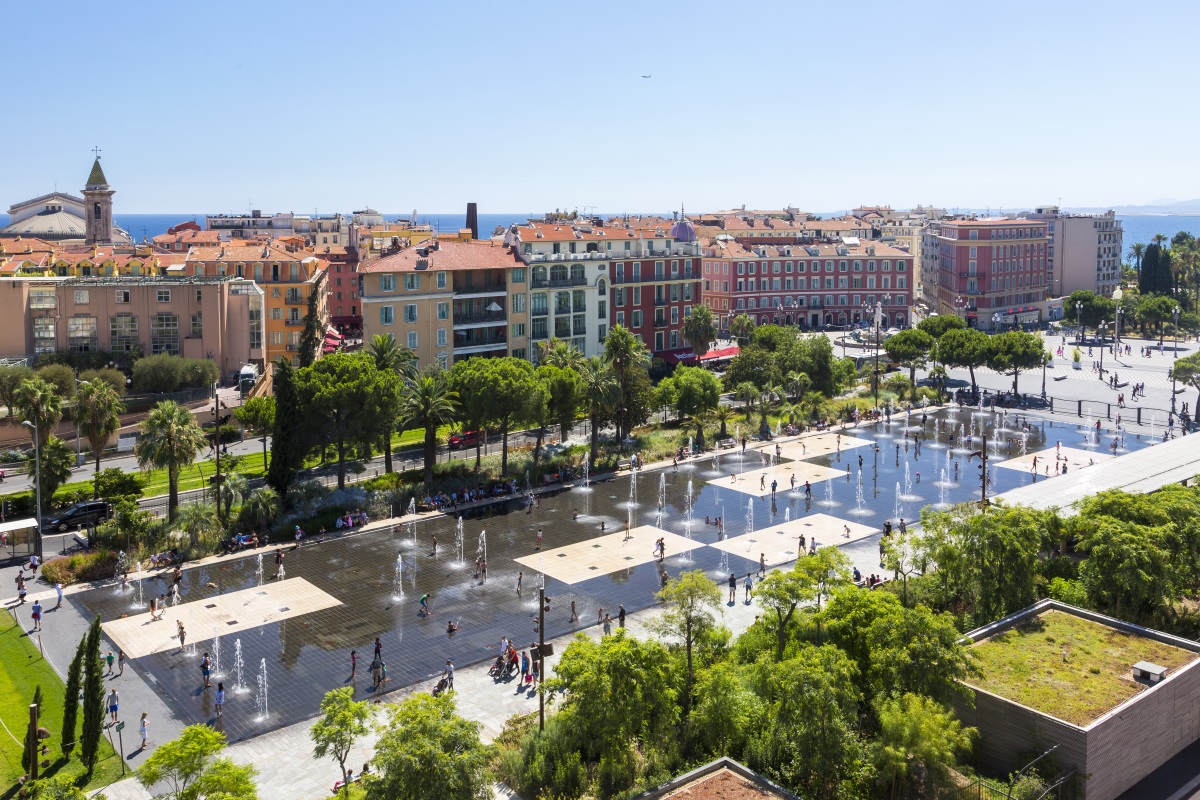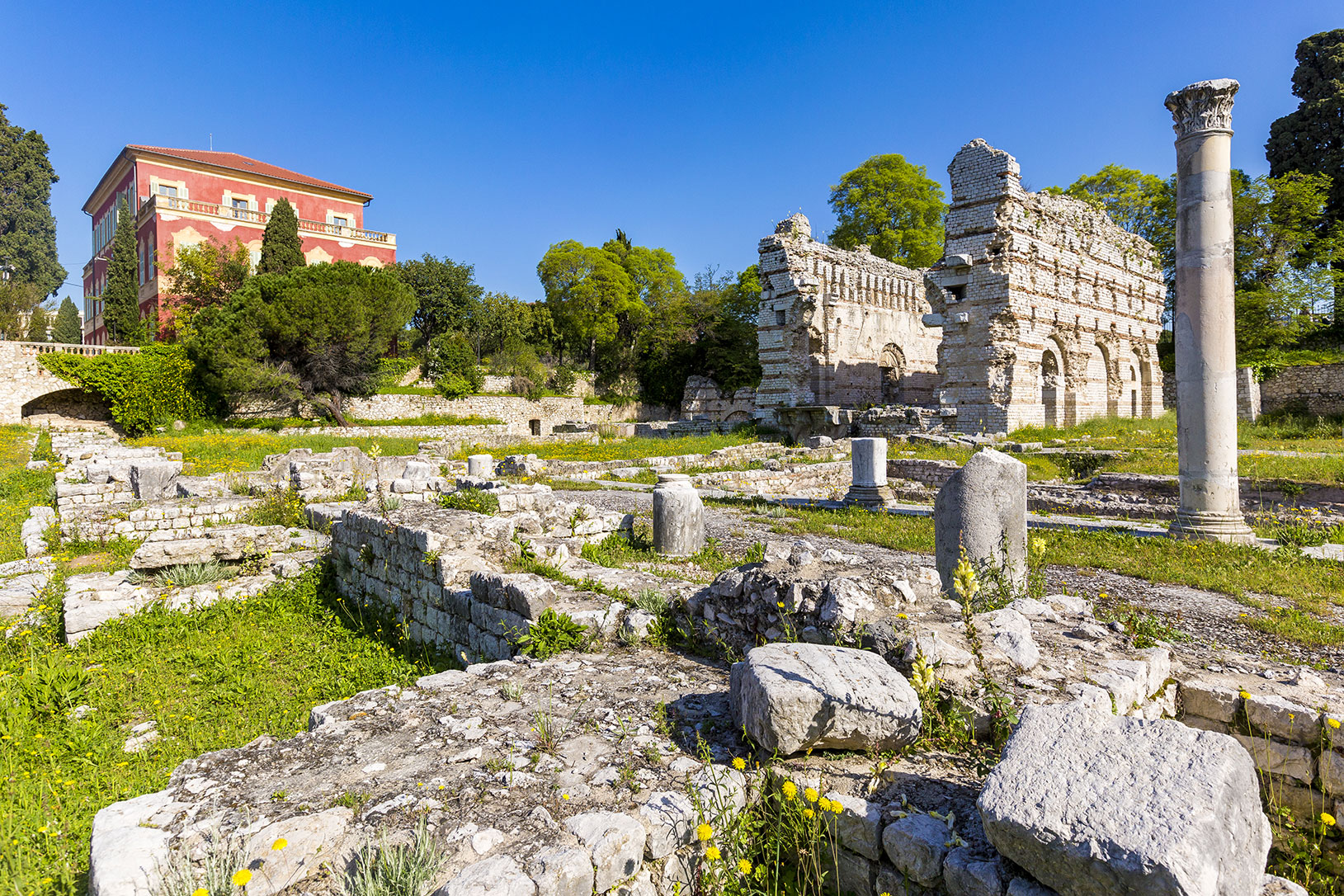The Old Town of Nice (Vieille Ville), also called Old Nice (Vieux Nice), lies just below Castle Hill. To the south it borders on the Promenade des Anglais, while to the north it touches the Paillon River, or rather the Promenade of Paillon, because the river has been flowing through the city in an underground channel since 1972. The names of streets in the Old Town are written in two versions: in French and in the local Nissart dialect (niçart).
The Old Town of Nice is full of historic tenements, churches, and squares. A walk through the narrow and shaded streets allows you to, almost, go back in time and feel the spirit of Old Nice – you just need to know where to look for it.
Old Town of Nice – where to start your walk
A stroll around Old Nice is best started from Place Massena, which is the central square of Nice. Going towards the sea, which is visible between the buildings, you will, in a minute, reach the green square called the Esplanade Georges Pompidou. Right behind this square, on the promenade, stands a tall sculpture that I call toothpicks, but is in fact a work by Venet commemorating the 150th anniversary of the annexation of Nice by France. But this is the Promenade des Anglais area, so let’s go back to the Old Town.
Just turn left onto the main street of historical Nice, Saint-François de Paule. This leads to Nice’s main marketplace – Cours Saleya. Along the way, you will pass the Opera House and Patisserie Henri Auer – a chocolate and candied fruit workshop that has been operating here since 1820. Queen Victoria of England personally bought her favorite chocolates here.
The Cours Saleya is an elongated square that, until midday, is filled with stalls of flowers and food, and which later transforms into a huge restaurant under the open sky. Every Monday there is a flea market here, which moves to the Old Port of Nice on other days. Here it is worth trying a traditional pancake made from chickpea flour called Socca.

